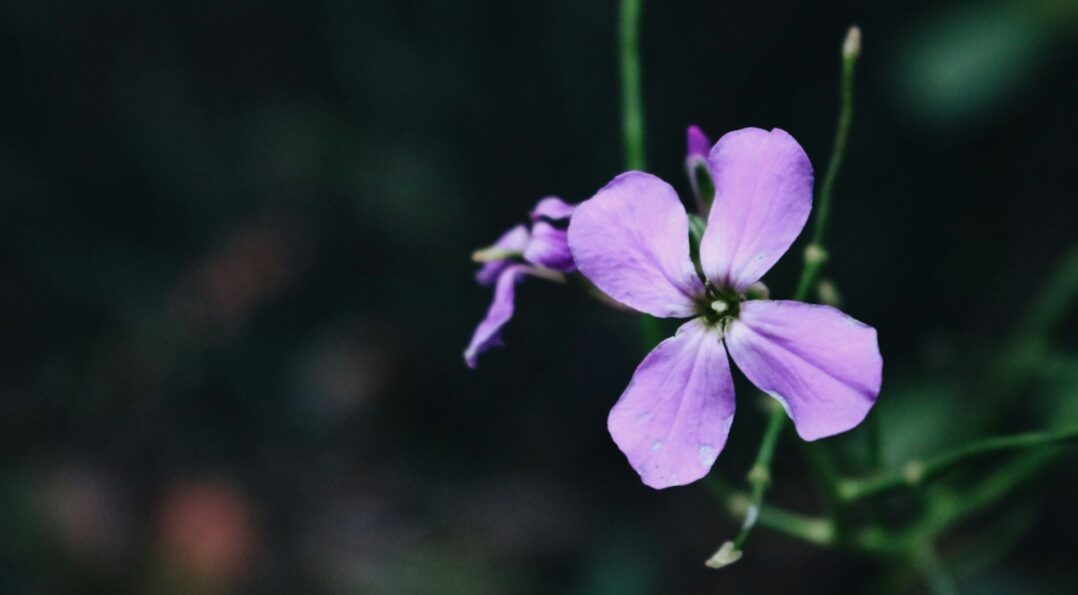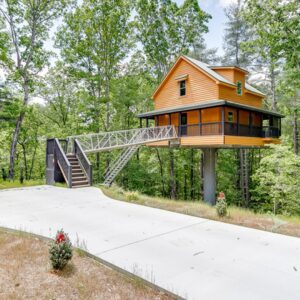Are you tired of city living? Experience a quieter way of life in Helen, Georgia, where native plant and wildlife abounds. You’ll find the native flora and fauna everywhere you go in the town and get a look at the natural history of the region.
1. Birdfoot Violet
Scientific Name: Viola pedata
Height: 1 foot
Soil: Dry, sandy, or rocky soil
Sunlight: Full to partial shade
Bloom Time: March-June
This flower is also known as the Pansy Violet flower and the Crowfoot. Reaching up to six inches in height, it produces delicate purple flowers with vibrant yellow stamens, along with dark green oblong leaves. This flower blooms from spring to summer and prefers to isolate itself from other plants. You are most likely to find it in prairies, slopes, forests, and glades, but can even spot it emerging from the roadside.
2. Southern Magnolia
Scientific Name: Magnolia grandiflora
Height: Up to 100 feet
Soil: Rich, acidic soil
Sunlight: Partial shade
Bloom Time: April to June
A staple of the South, the Southern Magnolia tree is a broadleaf evergreen tree that flowers in moist hardwood forests and wet, swampy areas. It produces fragrant white flowers in early summer, along with bright red fruits. It does not tolerate hot, dry areas and instead needs lots of moisture to survive.
3. American Wisteria
Scientific Name: Wisteria frutescens
Height: Up to 36 inches
Soil: Rich, slightly acidic soils
Sunlight: Full sun, partial shade, or shade
Bloom Time: May to June
This deciduous vine produces pale lavender flowers in the spring and is commonly found growing along trellises, fences, and walls. It is a relative of more exotic wisterias, but since it is native, it is not nearly as aggressive. It grows naturally around trees and other borders or hedges in moist, fertile soils, reaching heights as tall as thirty feet. You will also often find it growing along stream banks and throughout woodland borders.
4. Rose Trillium
Scientific Name: Trillium erectum
Height: 1 foot
Soil: Moist, nutrient-dense soils
Sunlight: Partial shade
Bloom Time: April to June
Also called Red Trillium, this flower only reaches about an inch and a half in height, so it’s easy to miss it if you aren’t observant enough. Growing in two different colors, both pink and white, it produces three evenly sized petals that curl downward at the ends. You can usually find it near streams, where it blooms in spring and summer.
5. Loblolly Pine
Scientific Name: Pinus taeda
Height: Up to 100 feet
Soil: Moist, sandy soils
Sunlight: Partial shade
Bloom Time: February-March
This evergreen tree grows quickly, spreading out in a broad, oval pattern with irregular horizontal branching It produces needles and cones in clusters of three to five. It’s one of the most valuable pines that grow in the southeast and is commonly harvested as a commercial species. You’ll also see these trees growing in sunny, nutrient-rich soils. And since it provides a good source of shade, so you’ll likely see lots of plants growing beneath it.
6. Dwarf Palmetto
Scientific Name: Sabal Minor
Height: Up to 10 feet
Soil: Moist, sandy soils
Sunlight: Sun, partial shade, shade
Bloom Time: May to June
The Dwarf Palmetto is an evergreen palm with large, coarse leaves. It tends to grow in a clumping pattern, producing one trunk that splits outward from the middle. It often grows in groups and has a vibrant tropical appearance. You will typically find this plant growing in lowlands that receive plenty of moisture, such as in swamps, maritime forests, and marshes. This versatile plant is also often found in coastal areas.
7. White Milkweed
Scientific Name: Asclepias Texana
Height: One to three feet
Soil: Dry soils
Sunlight: Full sun
Bloom Time: May to September
A friend of local butterflies, this plant is actually toxic to humans and can cause some irritation to your skin, so if you see it, resist the urge to touch it! This gorgeous plant grows up to eighteen inches in height, producing small, clustering white flowers. It produces white and purple stamens and blooms during the spring and summer months. You can usually find it on the roadsides, as well as in wooded places or anywhere else where it is sunny, sandy, and dry.
Helen also offers many colorful succulents that are native to Georgia. You’ll find Aloe and Sempervivum dotted along the seven most popular local flowers in Unicoi State Park. Need help identifying the flowers? Park rangers are on hand every spring for guided tours.
Kelly Holland is a gardening and landscape design writer who loves experimenting in her kitchen. Her quirky nature loves a bright color palette so naturally, her coveted garden is covered in a rainbow of fruits, vegetables, and flowers.







